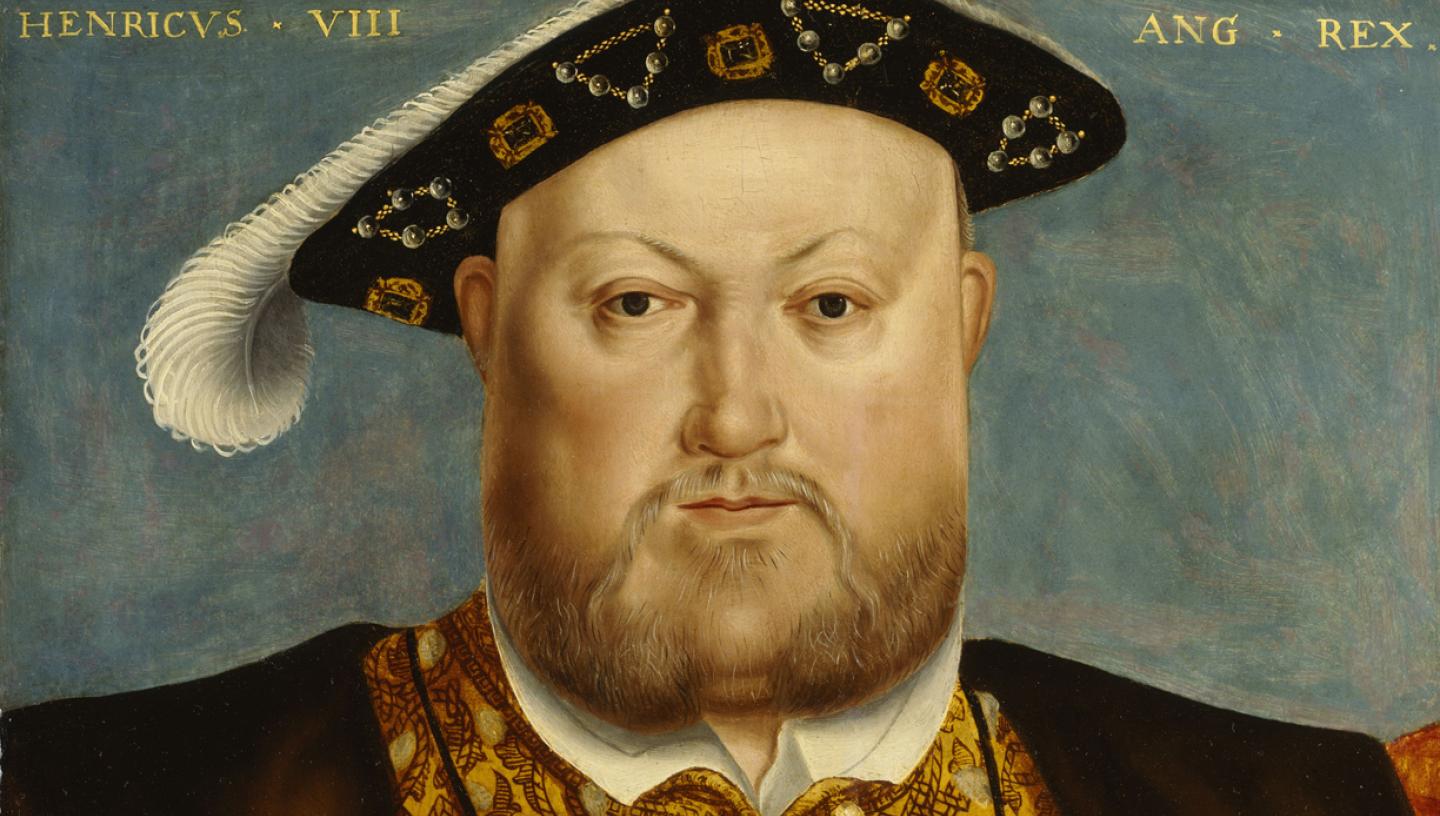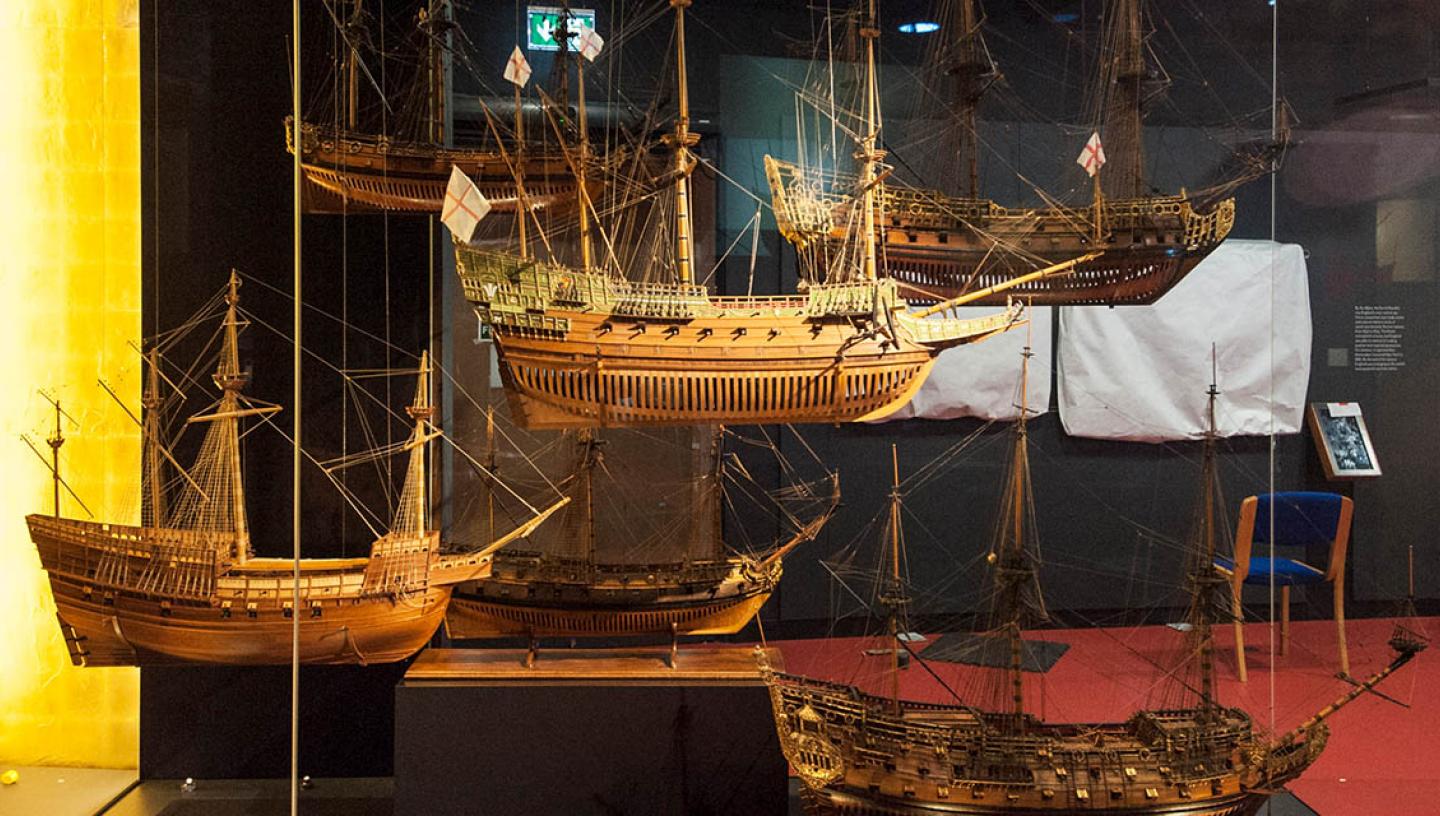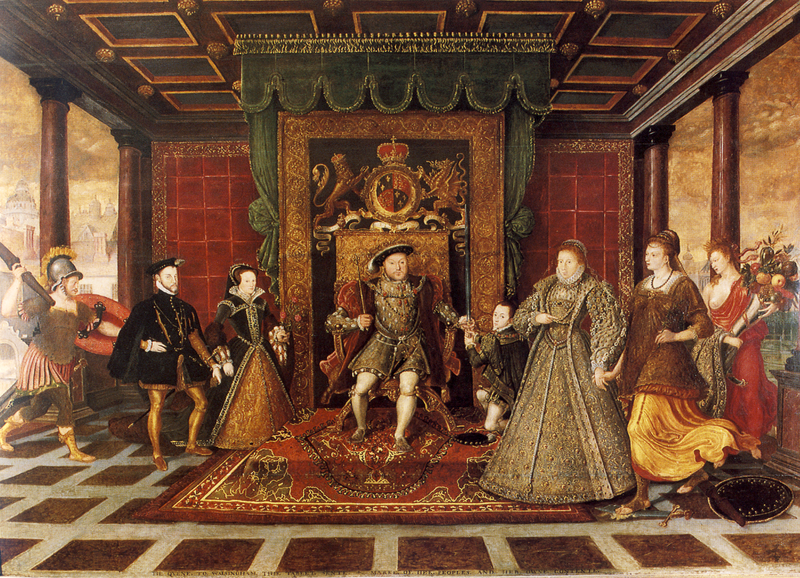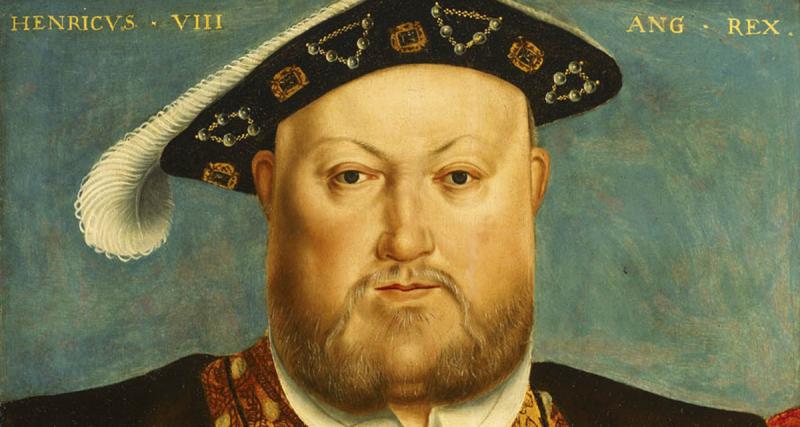
Henry VIII (1491–1547) is one of the most famous kings in English history. An important part of his legacy was his establishment of the Royal Navy, encouraging shipbuilding and creating dockyards.
Was there no navy before Henry VIII came to the throne?
Henry VIII's father Henry VII began a programme of building warships for a navy. By the time he died, there was five royal warships. Two of them were new four-masted carracks, much larger than the usual English merchant ship. By the time Henry VIII died in 1547, the navy had been built up to more than 40 ships.
Where were the ships built?
Henry VIII built dockyards on the River Thames at Deptford (1513) and Woolwich (1512). Both the new yards were very close to Greenwich, where Henry had a royal palace. He built the first naval dock at Portsmouth.
As well as space for building the ships, great storehouses had to be built, because the new ships needed lots of supplies. Henry also set up the Navy Board, the administrative wing of the navy, which oversaw the running of the navy.
Shipbuilding materials were sourced from the South of England. All ships were built of wood, which meant that very many trees were needed, and there were still quite large forests in parts of Kent and Sussex.
How did ships change during Henry VIII’s reign?
Warships now carried much heavier cannon on board, about 20 heavy and 60 light ones. The great cannon could now fire a ‘broadside’, which meant all guns along one side of the ship firing at once.
Watertight ‘gunports’ with hinges were also invented. These gunports were flaps that covered holes in the side of the ship. The flaps would be opened in a battle so the cannon could poke out while they were being fired.
The invention of gunports meant that guns could be carried much lower down in the ship, making it more stable. The first ship to carry the new guns was Henry’s flagship Mary Rose.
How big a crew was needed on the new ships?
In the 1540s, a warship had a crew that included about 200 sailors, 185 soldiers, and 30 gunners. Ordinary sailors helped the gunners with the cannon.
What food did the crew eat?
They lived mainly on ships' biscuit (about half a kilogram a day) and dried salted meat, usually pork or beef. Each sailor was also given 10 pints of beer every day.
What happened during battles at sea?
As well as using the cannon to fire stone and iron balls at the enemy, Henry's ships would have also carried many archers. The ship sailed as close as possible to the enemy, then the archers would shoot arrows at the crew of the opposing ship.
Even with the new cannon, they still tried to end a battle by boarding the enemy's ship. ‘Prize money’ was given to the sailors if they managed to capture an enemy ship, so when they fired their cannon, they tried to hit the masts and rigging, not sink the ship.


